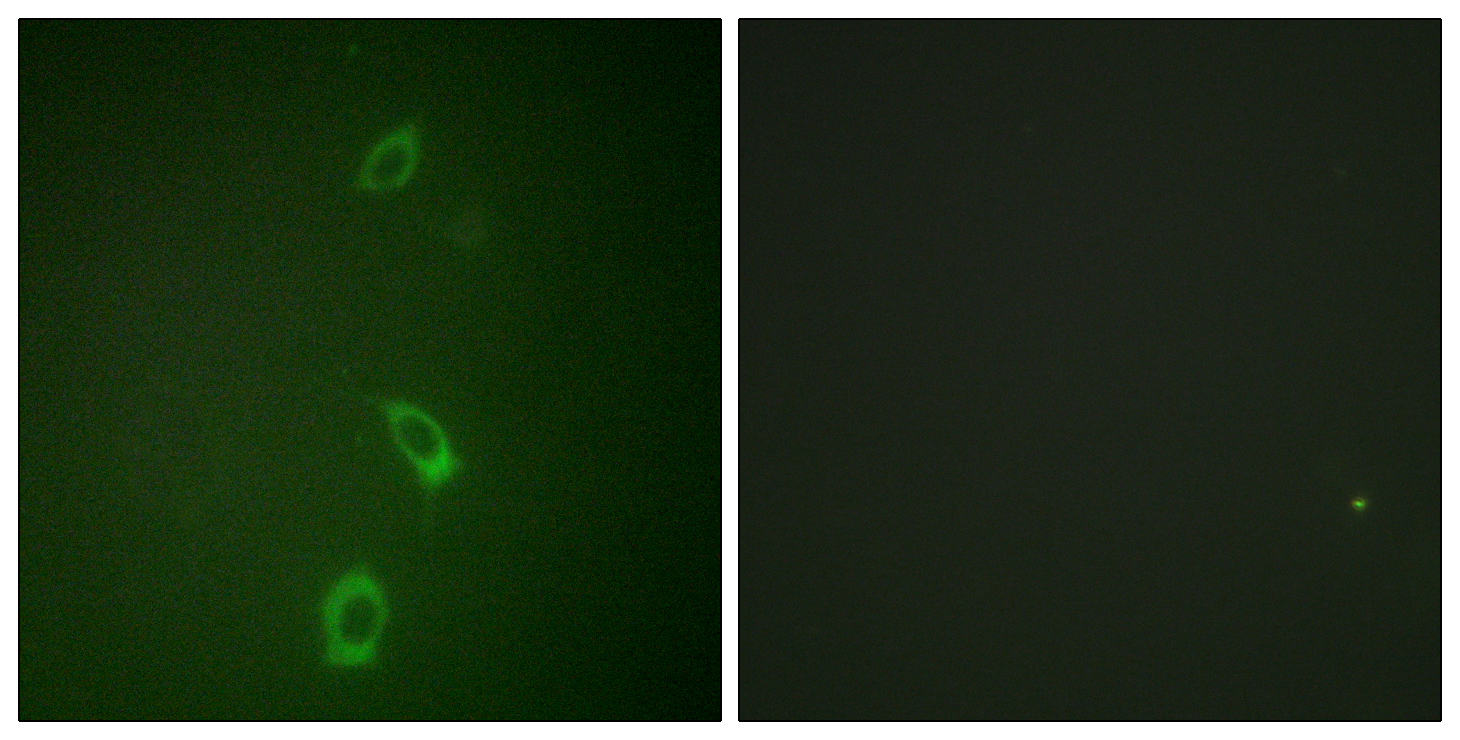产品名称
ROM-K Rabbit Polyclonal Antibody
别名
KCNJ1; ROMK1; ATP-sensitive inward rectifier potassium channel 1; ATP-regulated potassium channel ROM-K; Inward rectifier K(+) channel Kir1.1; Potassium channel; inwardly rectifying subfamily J member 1
蛋白名称
ATP-sensitive inward rectifier potassium channel 1
存储缓冲液
Liquid in PBS containing 50% glycerol, 0.5% BSA and 0.02% New type preservative N.
Human Gene Link
http://www.ncbi.nlm.nih.gov/sites/entrez?db=gene&term=3758
Human Swissprot No.
P48048
Human Swissprot Link
http://www.uniprot.org/uniprotkb/P48048/entry
Mouse Gene Link
http://www.ncbi.nlm.nih.gov/sites/entrez?db=gene&term=56379
Mouse Swissprot No.
O88335
Mouse Swissprot Link
http://www.uniprot.org/uniprot/O88335
Rat Gene Link
http://www.ncbi.nlm.nih.gov/sites/entrez?db=gene&term=24521
Rat Swissprot Link
http://www.uniprot.org/uniprot/P35560
免疫原
The antiserum was produced against synthesized peptide derived from human ROMK/Kir1.1. AA range:11-60
特异性
ROM-K Polyclonal Antibody detects endogenous levels of ROM-K protein.
稀释度
WB 1:500-2000;IHC-p 1:50-300
宿主
Polyclonal, Rabbit,IgG
背景介绍
Potassium channels are present in most mammalian cells, where they participate in a wide range of physiologic responses. The protein encoded by this gene is an integral membrane protein and inward-rectifier type potassium channel. It is activated by internal ATP and probably plays an important role in potassium homeostasis. The encoded protein has a greater tendency to allow potassium to flow into a cell rather than out of a cell. Mutations in this gene have been associated with antenatal Bartter syndrome, which is characterized by salt wasting, hypokalemic alkalosis, hypercalciuria, and low blood pressure. Multiple transcript variants encoding different isoforms have been found for this gene. [provided by RefSeq, Jul 2008],
组织表达
In the kidney and pancreatic islets. Lower levels in skeletal muscle, pancreas, spleen, brain, heart and liver.
细胞定位
Cell membrane ; Multi-pass membrane protein . Phosphorylation at Ser-44 by SGK1 is necessary for its expression at the cell membrane. .
信号通路
Aldosterone-regulated sodium reabsorption;
功能
disease:Defects in KCNJ1 are the cause of Bartter syndrome type 2 (BS2) [MIM:241200]; also termed hyperprostanglandin E syndrome 2. BS refers to a group of autosomal recessive disorders characterized by impaired salt reabsorption in the thick ascending loop of Henle with pronounced salt wasting, hypokalemic metabolic alkalosis, and varying degrees of hypercalciuria. BS2 is a life-threatening condition beginning in utero, with marked fetal polyuria that leads to polyhydramnios and premature delivery. Another hallmark of BS2 is a marked hypercalciuria and, as a secondary consequence, the development of nephrocalcinosis and osteopenia.,function:In the kidney, probably plays a major role in potassium homeostasis. Inward rectifier potassium channels are characterized by a greater tendency to allow potassium to flow into the cell rather than out of it. Their voltage dependence is regulated by the concentration of extracellular potassium; as external potassium is raised, the voltage range of the channel opening shifts to more positive voltages. The inward rectification is mainly due to the blockage of outward current by internal magnesium. This channel is activated by internal ATP and can be blocked by external barium.,similarity:Belongs to the inward rectifier-type potassium channel family.,tissue specificity:In the kidney and pancreatic islets. Lower levels in skeletal muscle, pancreas, spleen, brain, heart and liver.,
纯化
The antibody was affinity-purified from rabbit antiserum by affinity-chromatography using epitope-specific immunogen.

